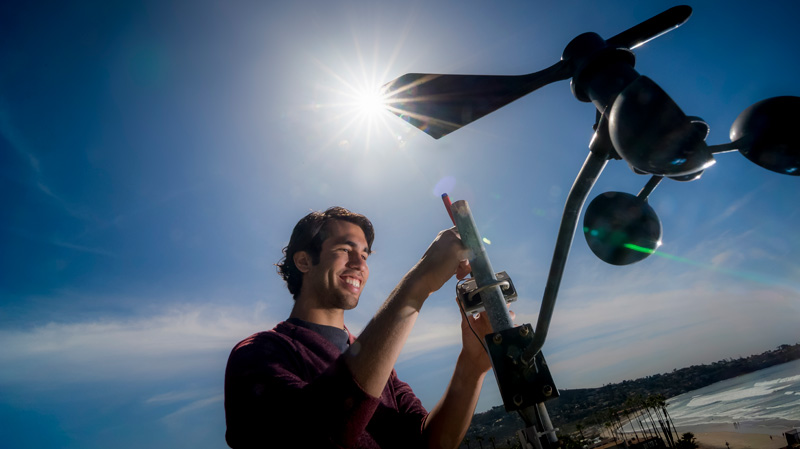The stations, which are installed on UC San Diego buildings, were featured in the March 7 issue of This Week @ UC San Diego.
According to the story:
Designed in 2008 by Kleissl and his students, the network is unprecedented in the United States for the density of weather data that it collects.
DEMROES reveal the temperature variations that occur across campus, from the cooler coast near Scripps Institution of Oceanography to the warmer east side of campus near Moore’s Cancer Center. The data the system collects on temperature, humidity, rainfall, wind speed and solar radiation allows researchers to predict microclimate impacts on building energy performance, such as natural ventilations to cool buildings and bright sunlight to heat structures.
Kleissl also is using the project to teach students and inspire them to seek careers in which they can help reduce energy use.
Both graduate students and undergraduates have been involved in designing, installing and upkeeping the DEMROES network at UC San Diego.
“From constructing the stations, to programing the sensors, there is a lot of opportunity for students at any skill level to participate in the project,” said Kleissl. “We hopefully can direct these students and open their eyes to opportunities and how to practically apply their research to projects with a positive impact.”
Felipe Mejia, a first-year doctoal student in engineering now heads up the project. “I first got involved because I really like hands-on projects and working in the field,” Mejia said. “The DEMROES system provides a large amount of data that is used to both validate our solar forecasting studies and provide input to building management systems across the campus.”
Thank you to UC San Diego Publications and photographer Erik Jepsen for sharing their wonderful pictures of Mejia, inspecting the DEMROES station on top of Hubbs Hall at the Scripps Institution of Oceanography.
Read the full This Week @ UC San Diego story about green roofs on campus here.
Read the full This Week @ UC San Diego story about green roofs on campus here.

Oh wow great work dear,But i want to know some resources about the human tracking system.any suggestion will be appreciated.
ReplyDeleteThank's & Regard's
Skycaddie sg4